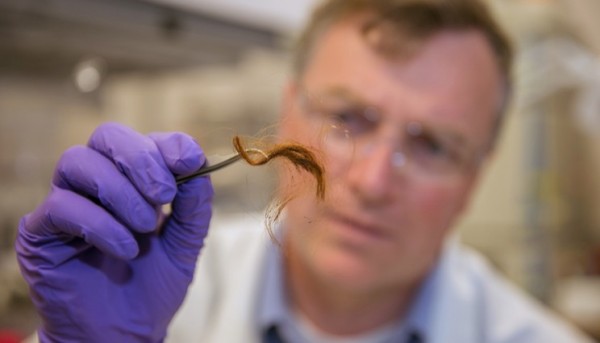By Ana Verayo, | September 08, 2016

Researchers from LLNL and a Utah startup company have developed the first-ever biological identification method that exploits the information encoded in proteins of human hair.
Scientists just revolutionized the field of forensic science as they reveal how human hair is unique to each individual. This is crucial for archaeologists as well when it comes to identifying ancient human remains.
Since DNA material can degrade over the course of time, DNA evidence gets destroyed which can become challenging for forensic scientists and archaeologists. In this new study, researchers have determined that proteins are a very reliable and sturdy source of DNA, essential for profiling.
Like Us on Facebook
During the study, scientists extracted hair samples from six individuals that are estimated to be 250 years old. Further analysis shows how these proteins are still stable and distinct even after the passage of time and significant environmental factors.
To date, scientists were able to determine 185 individual protein hair markers obtained from hair samples of 76 living humans with European and American descent, including African roots that are enough evidence to identify an individual.
New findings confirm that there are direct links with the individual's hair protein samples with their DNA, which makes for strong evidence about this new method's revolutionary approach in forensic science.
According to lead author of the study, Brad Hart from the Lawrence Livermore National Laboratory, this protein based identification system can be crucial in DNA profiling, becoming a true game changer in forensics.
Apart from this, scientists are intensively working on a new catalogue of protein markers that can condense the number to a core 100 pattern group that will be diverse enough to demonstrate protein patterns that can represent the entire human population.
When proven to be a success, this new DNA identification process will be readily available for police enforcement and forensic scientists when it comes to identifying bodies and analyzing crime scenes.
This new study is published in the journal PLOS ONE.
-
Use of Coronavirus Pandemic Drones Raises Privacy Concerns: Drones Spread Fear, Local Officials Say

-
Coronavirus Hampers The Delivery Of Lockheed Martin F-35 Stealth Fighters For 2020

-
Instagram Speeds Up Plans to Add Account Memorialization Feature Due to COVID-19 Deaths

-
NASA: Perseverance Plans to Bring 'Mars Rock' to Earth in 2031

-
600 Dead And 3,000 In The Hospital as Iranians Believed Drinking High-Concentrations of Alcohol Can Cure The Coronavirus

-
600 Dead And 3,000 In The Hospital as Iranians Believed Drinking High-Concentrations of Alcohol Can Cure The Coronavirus

-
COVID-19: Doctors, Nurses Use Virtual Reality to Learn New Skills in Treating Coronavirus Patients







